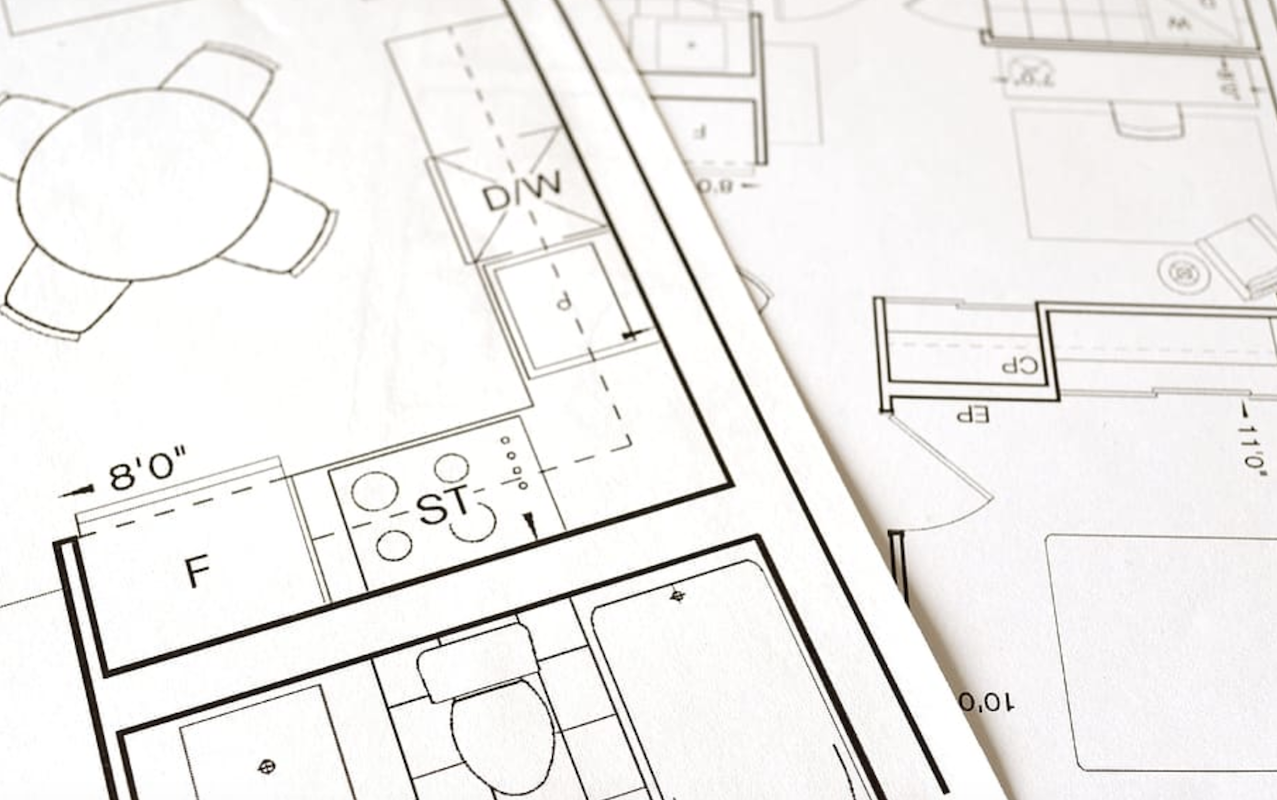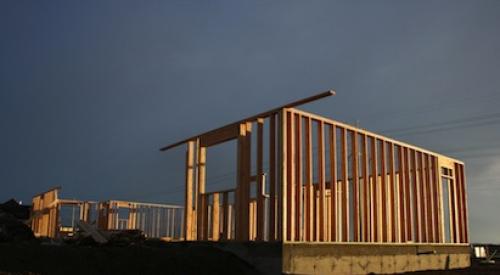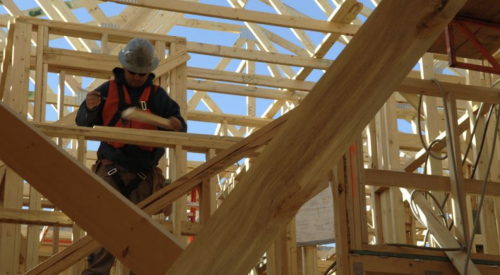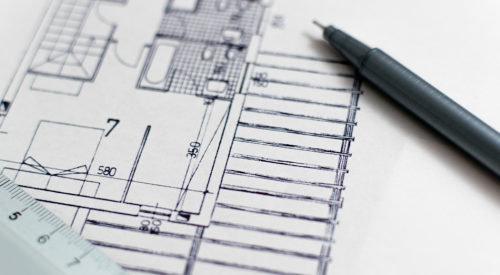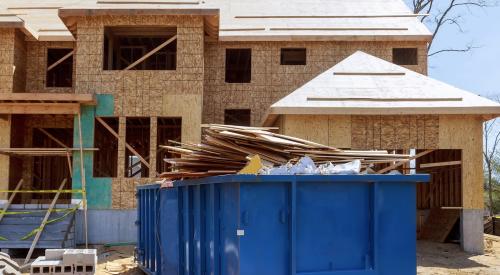In Pro Builder we've been exploring the application of Lean process in the home building industry. There is overwhelming evidence that a relentless focus on the elimination of waste in product and process creates profit for builders, suppliers, and trade contractors alike — without the collateral damage associated with more common builder cost-cutting strategies. In fact, using Lean process, relationships improve along with profit, often dramatically.
While it is encouraging to see home building catching up with the rest of the industrial world, we have a long way to go. Beginning with this article, we break Lean process down into specific elements requiring new thinking, improved methods, tighter focus, and greater discipline. It is logical to begin with Lean design because design, plans, and specifications come first in the building process. Yet there is a paradox here, as acknowledged in my article “10 Steps to Adopting Lean Building.”
10 Basics for Lean Design
1. We will not “dumb down” the houses and make them hard to sell. The goal is a Lean design that ensures the most efficient use of time and materials at the lowest cost, for every price point, independent of feature and amenity level.
2. Each dollar or unit of time avoided upstream eliminates a multiple downstream. Lean design money spent up front is an investment with immediate return, not an expense.
3. Involve key suppliers and trades up front in design, beginning at the “blackline” or “CAD blockout” stage, in a structured process. Then review each model with the same trades as it is built.
4. Site-specific plans with complete drawings and details for framing, foundation, roof, and mechanicals, accompanied by door, window, and header schedules, et al, are essential to reducing total cost.
5. Establish a clear set of design guidelines and checklists, including even dimension analysis, switch and outlet placement, duct and chase sizes and placement, provisions for shear, locations of laundry rooms, etc. All homes are designed to these guidelines, every time.
6. Any dollar spent on house cost has to be roughly doubled at retail. Calculate the retail cost and ask, “Would the customer pay for this if it were an option at this price?” If the customer won’t pay for it, eliminate it. If you cannot eliminate it, reduce it.
7. Understand the limitations of your architects and designers. They rarely understand or show a concern for cost. Construction and purchasing must take their vigilant eye upstream into the design phase.
8. Challenge your engineers, continually. Redefine their job as not to simply seal your plans, but to provide the most efficient structure, meeting all codes, at the lowest cost. If they don’t get it, find new engineers who do.
9. Do Lean design and plan review with key suppliers and trades for each new model. Review does not stop as each new model is completed. All existing plans should be subject to structured review on a rotating schedule.
10. Establish an airtight process for documenting all changes and improvements in plans and specifications, tracking their implementation and monitoring their continued use.
Overcoming Obstacles in Lean Implementation for Home Builders
Yes, we started with the list of 10 basic principles for Lean design. And, while common sense suggests that Lean design comes first, practical experience from more than 60 Lean projects demonstrates that until a company acquires considerable experience in Lean implementation and has confronted the monumental costs associated with not operating by Lean principles, they rarely make the cultural and operational changes required to fully address design.
These costs must be identified, understood, and measured, yet few builders possess the required knowledge and skills to do it. That in itself is a major obstacle in Lean implementation.
We are left with a conundrum: You have to understand and measure the downstream costs before you can attack the upstream issues that produce them. So we embark on this discussion of Lean design with a strong caution: Home building’s approach to design, plans, and specifications needs a comprehensive overhaul, but don’t go there first. To do so otherwise means you will miss more of the opportunity available through Lean design than you will find.
Remember, anything a reasonably knowledgeable customer will not willingly pay for is waste.
After completing 30 or so Lean implementations using a highly-structured process involving 20 to 25 suppliers and trades, it became painfully clear that at least half of the 150 or so cost-reduction opportunities identified per builder could be remedied by applying Lean principles to design, plans, and specifications before the first stake is driven on the lot. This represents an incredible opportunity, but let’s establish two important caveats up front.
First, Lean is never about “dumbing down the houses” or making them otherwise hard to sell. Builders who put out cheap, unattractive, or otherwise marginal products under the banner of Lean simply don’t get it.
Second, with a few notable exceptions, if you rely on your architect and engineer to provide the most efficient designs and plans, you are overpaying for both product and process as much as $10,000 per unit. Architects are not trained to identify and minimize cost at all levels of design and engineers face no consequences for over-specifying load, wind, and seismic requirements. This is so pervasive that a field review of 60 builders reveals that 100 percent have obvious cases of over-engineering or simply wasteful design.
Add to that a category we’ll call “design by whim.” This includes everything from the notions of the sales manager to the proverbial “what the last salesperson heard was hot from the last customer who left the sales office just before closing on Sunday night” to the dreaded notes that get left on your desk Monday morning after the president and his/her spouse spent Sunday afternoon driving around looking at product. Finally, there’s the phenomenon of “design creep,” whereby with each new edition of a plan we tend to add on a bit more until the value equation has been destroyed. We are wise to heed the words of author Antoine Saint-Exupery who poignantly observed, “A designer knows he has achieved perfection not when there is nothing left to add, but when there is nothing left to take away.”

A Cautionary Tale: 8 Examples of Waste in Home Building
This waste ranges from the relatively simple, such as 6-inch frieze board that could be reduced to 4 inches without detracting from the look of the house or eliminating a short course of brick above a lintel that no one can see, to the egregious, such as homes so festooned with rooflines, gables, and eyebrows that they stand as a mockery to architect Louis Sullivan’s maxim that “form follows function.”
It would be only mildly surprising to see the ubiquitous “We Buy Ugly Houses” billboards show up in front of some of these architectural monstrosities, and the waste is astronomical. It is only after a team of your people face down example after example of such waste — large, small, and even the seemingly trivial — that you open the doors to embark on a serious journey toward Lean design. Remember, anything a reasonably knowledgeable customer will not willingly pay for is waste. Examples are legion:
1. In a Virginia suburb, a large foundation is formed-up for at least 9-foot basement ceilings. It takes just a minute to spot several classic wastes: four corners for a firebox that can be cantilevered with no material impact on the home; multiple piers built way beyond code; and front porch supports that could have been wing-walls but instead run full-depth to the footer. Waste: more than $1,600. Is this something a customer would willingly pay for?
2. In Phoenix, a sunroom wall is framed for two, triple-pane sliding doors, each opening spanning more than 8 feet. Across the top of the opening is a massive, custom-made lam-beam using 13 layers of 2x4 22 feet in length. Supporting it are three framed posts, requiring 30 jack and king studs in total, cut from 12-footers. Above the beam, a shallow 3/12 truss supports a small gable end. It takes an army of framers and a crane to erect the beam, which is supporting nothing. Total excess cost: More than $1,200. How did this happen? It was a “borrowed plan,” a two-story from another city quickly converted to a single-story to fill marketing’s “urgent demand” for a big ranch. A few things were missed in the process. Downsizing the wall that carried no weight was one of them. Lucky that almost no customer is knowledgeable enough to spot this.
3. In San Diego, three guys stand by the curb holding a plan over their heads up to the bright sun, pointing and gesturing, confusion on their faces. They are building a left-hand house from a right-hand plan — a mirror image. When the builder is asked why he would ask any trade to build this way, the stock reply comes, “It costs a lot to reverse those plans and we had to let our CAD guy go.” The cost: Between $100 and $200 if you have your own CAD guy, a bit more by an outside service, depending on system capability and complexity of the plan. How many mistakes that arise from 40 or more suppliers and trades building from reversed plans do you have to avoid to break even on the cost of reversing the plan? Less than one. The ROI from this simple component of Lean design runs into the thousands of percent — if you know how to measure the consequences of not doing it.
4. In Dallas, more than five full cubes of brick sit in front of an almost-completed exterior, still in the bands, with piles of loose brick scattered about the lot. The superintendent explains that for months, every 2830 model has had five or six extra cubes, and that all this brick has made the “bricker” lazy on utilization. The superintendent told his boss, called purchasing, filled out the necessary forms, but the brick just keeps coming. Something about not enough detail on the plans, and even though they changed the design to waist-level on the back and sides last year, the PO still specs it as full brick all the way around. Said the superintendent, “I finally gave up and just called the supplier for a pickup after each job. I asked for a delivery adjustment but he said he has strict orders not to take quantity changes from the field. Their restocking fee is 30 percent. I don’t even want to think about what it costs us.” The customer sure would not want to know, either.
5. In Atlanta, the day-long supplier/trade partnering workshop was going well as lunchtime approached. There was no shortage of frustration but the 26 participants were clearly loyal to the builder, with a willingness to help improve both product and process. As table discussions progressed into report-outs on things the builder does that add cost to suppliers and trades, the owner of a large plumbing outfit suggested that during lunch everyone go out to their truck and bring in a copy of the 2305 plan and spread them across the floor. The final tally was 26 suppliers and trades using five different editions of the 2305 plan. A long and passionate discussion ensued about the problems and mistakes made because of different editions of plans floating around the sites with no control. Estimated annual cost implications: Six figures.
The trade notes that had he been invited to review the plans in the CAD blockout phase, he could have saved the builder more than $600 per house in labor and material.
6. In Calgary, the owner of a drywall company passes out color-coded plans and an excel spreadsheet. The table shows that drywall utilization on the new, first-time buyer product requires 25 percent more board per square foot of floor space than that of their move-up product. The product design manager observes that they made their houses smaller to hit a lower price point and in the process drove up costs — not exactly what they (or the customer) had in mind. The trade notes that had he been invited to review the plans in the CAD blockout phase he could have cut the extra board significantly, saving more than $600 per house in labor and material.
7. Outside New Orleans, HVAC units on many models are located over garage space, requiring extra-long and oversized feeds and returns, adding cost and degrading efficiency. There appears to be plenty of room to locate the units in the center of the house. Questioning reveals a belief that the garage location reduces noise that bothers customers. Some brief research shows that, although that might have been a legitimate issue 10 years ago, with the new HVAC designs this concern is no longer valid. Subsequent relocation of the units reduced the length and size of ductwork and enabled a half-ton drop in the A/C compressor capacity. Total savings average more than $500 per unit. All future plans will be engineered for HVAC up front, with specific locations and sizes for all components.
8. In Pennsylvania, two company owners pull up to an overflowing 40-cubic-yard, high-side dumpster. Just from the top of the pile, they start pulling 6- and 8-inch insulated ductwork and lay them on the ground. More than 80 feet is found in six runs ranging from 12 to 15 feet that could have easily been used for short runs and “jumpers.” A little more digging produces two 35-foot coils of red PEX ½-inch supply pipe, worth about $25. When they look at all the shingles, lumber, and brick — just what they can see — one of the owners says, “maybe we should call our guys and our trades out here, dump this entire load out, sort it, and count it.” That is guaranteed to be a profitable education for all, but best not do it when customers are about. They might not understand.
Not all examples are dramatic with huge dollar savings, yet it is remarkable how quickly even small items accumulate to an impressive number. Simply calling your framers in up front for a detailed review of a new plan, then walking the first model (or prototype) and declaring that every single stick of lumber will be challenged reveals one-dollar-here, two-dollars-there savings from the elimination of unneeded jacks, kings, headers, spacers, and blocking that adds up to hundreds.
Never forget that after the home is built, the waste is never recovered.
And if you just thought to yourself, “We take most of that out of scrap already on the site so we wouldn’t save anything,” you go immediately to jail, do not pass GO, and do not collect $200. Your get out of jail free card will arrive after some serious remedial study on Lean methods. The same exercise as part of an ongoing Lean design process works for foundations, mechanicals, drywall, insulation, roofers, siders — every single supplier and trade that contributes to the house. But the key is “ongoing,” and if you do not conduct this exercise for every new plan, every time, you are simply leaving thousands of dollars per unit built lying around in the mud.
A Comparison: Stick-Built Roofs vs. Pre-Fab Trusses
Some of these savings from designing out waste up front can be calculated by simple math. Others require a firm grasp of total cost and all of its components, and it’s rare to find in our industry.
A perfect example is the comparison of stick-built roofs versus pre-fab trusses. In some parts of the country, labor is so cheap (at least for now) that a comparison to using trusses just does not pencil out, according to the builder’s simple math. Then we start asking questions such as:
1. How much lumber ends up in the stick-built roof, compared to using trusses? Calculate the actual board feet on a popular model. The results will surprise you.
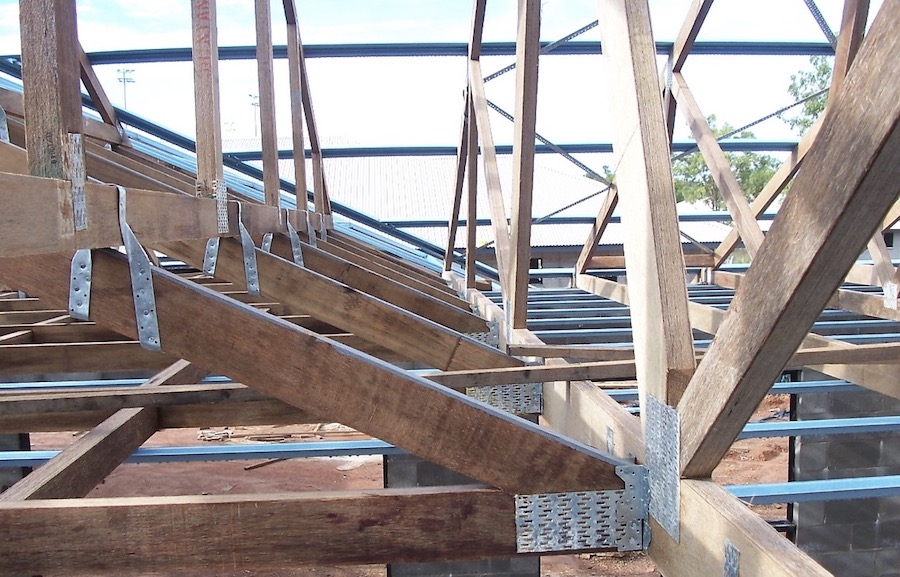
2. How much extra waste are you paying to haul away cut-offs and the inevitable extra material that is used up in stick-built roofs? A good portion of a dumpster? (Even if trash hauling is turnkey, it’s in your framer’s overhead, and thus you pay for it.)
3. How much material and labor will you save by eliminating the load-carrying requirement from interior load-bearing walls now that all or most of the load is carried by the trusses to the outside walls?
4. What will you save by eliminating all or most interior foundation piers and footings now that the load is carried to the outside?
5. How much will you save on your framing labor bill for the roof structure? It usually takes a framer three to five houses to start understanding the savings. By house number five, if the framer claims no savings, you need a new framer.
6. How much is the saved day (or two) on your schedule worth? If you use it for production that results in higher absorptions, it is worth at least 300 percent more than you think.
7. How much less theft will you have?
We still can't declare that trusses are a better design alternative without taking each model on a case-by-case basis, but more often than not if you do the total cost analysis you’ll find that they are. And with the systems that truss manufacturers are using today, they can handle virtually any roof and any change. The manufacturers are more than willing to work with you up front in a Lean design process — the best will demand it — only to save you money.
We have covered many examples illustrating how money is lost in design, plans, and specifications. Never forget that after the home is built, the waste is never recovered. It is simply bad business to issue a demand letter requiring all suppliers and trades cut their price by 10 percent when there is a far greater amount in product and process waste in your homes that can be eliminated, and without collateral damage.
Stop for a moment and contemplate the hundreds of thousands or even millions of dollars buried on your sites the past few years. Could you use that money right now? You cannot get it back, but you absolutely can avoid losing it in the future. All it takes is knowledge to recognize the problem, resolve to fix it, discipline to maintain it, and a full commitment to Lean design as the way you do business every day.
